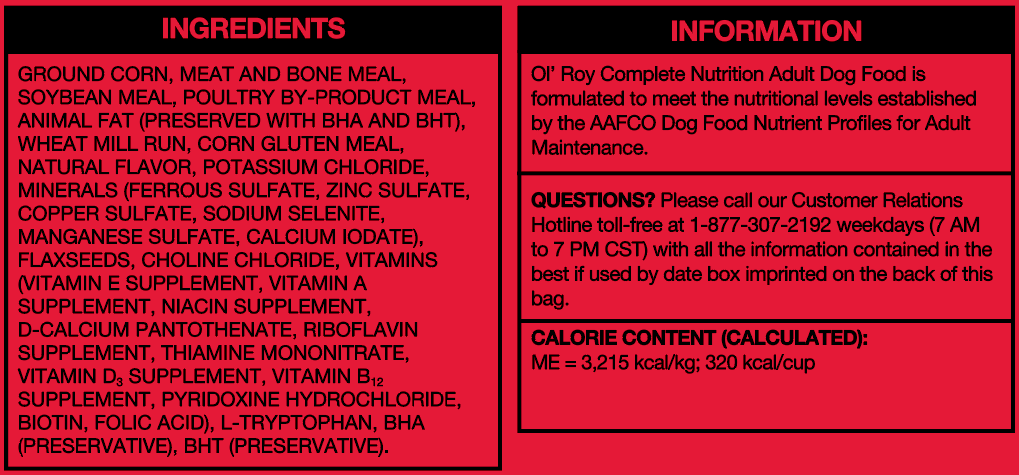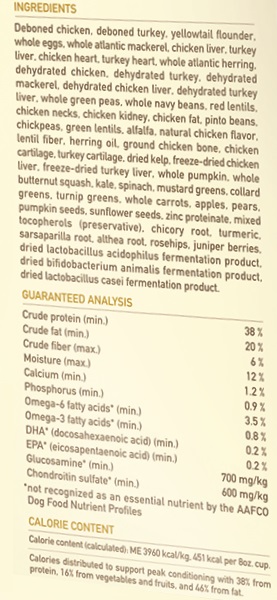Volume 1 | Chapter 4
How I Improved my Dog’s Nutrition- One Dog’s Journey from Kibble to Raw –Guest Post by Orly Leitner
DISCLAIMER: This is our personal story of which I am happy to share with you. Everything I keep learning is from hours and hours of research, experimentation and of course, common sense. These instalments will provide you with insight into the challenges that surround transition, balancing nutrition and trying to do everything right. Pet owners should always conduct their own research and consult with a veterinarian before making changes to their pet’s diet. Every dog is unique with its own specific needs and please keep in mind that I am neither a veterinarian, nor a nutritionist. I am a passionate dog and cat enthusiast on the path to becoming a holistic pet nutritionist.
A big thanks to Skai Wantstofly, who unexpectedly and accidentally passed in 2018 at the young age of 16 years. He will always be remembered for being full of vitality and vigor and as the ambassador who taught me that dogs can grow old and still have a great quality of life. A big thank you to all my mentors and teachers who have guided me on this journey and continue to inspire me to keep learning and never stop trying new things. Dr. Peter Dobias, Dr. Karen Becker, Dr. Richard Pitcairn, Dr. Jean Dodds, Dr. Andrew Jones and the one person that keeps me grounded, Dr. Amanda Glew.
Dear Friends,
I wanted to apologize for the hiatus I unexpectedly took since June 2018. My beloved Chloe was diagnosed with Lymphoma and I dedicated all my time and energy to providing her the best quality of life that I could for the time she had left with me. With the help of the magnificent team in Oncology at the DMV (Dr. Hugues Lacoste, Eliane Morency and all the support staff) we managed to give her an additional 6 wonderful months. My main goal was to make sure she did not suffer for one minute. Sadly, she stopped responding to the therapy and her quality of life changed. With great anguish I let her go peacefully at home in December. She had a fabulous 14-year life and a piece of my heart will always be missing without her. They are like our children, aren’t they?
So, I now dedicate all my articles to the memory of my beloved Chloe who was my guinea pig in nutrition and as odd as it may sound “If not for the cancer she was in perfect health”.

WHAT’S IN A FOOD LABEL? MORE THAN YOU THINK!
Let’s begin….
RAW FOODS FRESH OR FROZEN – MY FAVOURITE PICK
FOUND MOSTLY IN BOUTIQUE OR PRIVATE PET FOOD SHOPS
Variety is the key: Different protein sources. (Chicken, Fish, Beef, Lamb etc.)
- Best raw food will come from the freezer and is as close to natural.
- What is the protein source? Veggie content and fat content.
- First thing to look at is whether it is AAFCO compliant. These rules have been updated recently.
i.e. Is it nutritionally balanced for all life stages of your dog.
- Best to purchase Canadian or US made for purity and food control.
The guaranteed analysis:
- The fat content can be quite variable amongst different raw foods. It ranges from low to high depending on the brand. Dogs who are underweight will do well on a higher fat content, but if your dog is overweight, you want to keep an eye out for that.
- Raw contains about 70% water in its natural state.
CANNED FOODS – NEXT BEST THING
Contain about 70% to 80% water and has been processed.
Still a good second choice, if for whatever reason you don’t want to go with raw food.
First thing to look at is the protein and then second, the whole grain, as it is not always necessary or recommended to feed grains at all if your dog is healthy. Grains would be helpful if your dog is ill and needs to offset the amount of protein they are getting. Consult your veterinarian on how to adjust the food, according to the health issue.
Ideally, you want to see meat being listed first and/or second on the label followed by good sources of veggies and fruit. I recommend whole foods and not by products of meat or pulp from veggies and fruit. Human grade ingredients does not mean humans should consume it; but that the ingredients used are human grade.
DEHYDRATED RAW FOOD – ALSO A GOOD ALTERNATIVE
The powdered type of meat, veggies and fruit are reconstituted with warm water. It also has about 70% water content, unless you want to add more then required. It is dehydrated raw, so not processed at high temperatures. Very digestible gruel and also great for dogs with gastrointestinal issues or recovering from surgery. It is easy on the stomach.
DRY FOODS – NOT MY FAVOURITE PICK
Contain 12% moisture on average and lacks moisture.
Food lacking in moisture can lead to deficiencies in your dogs’ body. Every life form needs water. Also, it is processed at high temperatures so, the nutritional value is questionable. The same can be said about our food when we cook the hell out of it, right?
Oh yeah and eating dry food does not clean your dogs’ teeth, this is a myth. Does eating granola or crunchy crackers clean your teeth? Carbohydrate rich food actually promotes plaque and tartar.
Teeth cleaning is best achieved by brushing your dog’s teeth but if that is not possible, the shearing action and gnawing on dry bones (not cooked) is very helpful to keep teeth cleaner than doing absolutely nothing.
All dry foods need to have some kind of starch or gluten to make the food stick together, like tapioca, potato flour or pea flour. So be aware being grain free doesn’t mean its carbohydrate free.
Chicken Meal or any identified protein meal has had the moisture removed so its dehydrated and ground up. Can contain carcasses, flesh and skin with or without bone.
There are good quality dry foods. Ideally, look for whole foods in the first few ingredients.
GROCERY OR BIG BOX STORE DRY FOODS-THE DEVIL IS IN THE DETAILS
Most consumers will want to see meat as the very first ingredient which is really raw meat; great right? but remember, meat is about 70% water that will be dehydrated to make dry food.
So, in reality, the volume of the 2nd 3rd 4th and 5th ingredient will make up the bulk of the pet food.

Sooo, if you see chicken, brown rice, white rice corn and barley as the ingredients guess what the 2nd 3rd 4th and 5th is what you are mostly feeding your dog. The chicken being in the first position, once dehydrated will be maybe less than 20% of the volume. So ideally, you want to see the first 3 ingredients as proteins (meat or fish). If it’s grains as the example above, you are feeding a primarily grain food diet.
Remember, everything is listed by weight before processing on dog food labels. Raw meat with moisture taken out weighs a lot less then grains.
An ingredient listed as “chicken” or “beef” may include the heart, esophagus, tongue and who knows what else. This is true for all foods, unless otherwise indicated.
Unidentified meat meal is very dubious, and it can be anything. I don’t want to scare you, but it can be roadkill, inedible animal parts, shelter kill and all kinds of gross things. Meat meal is not necessarily a bad protein if it is identified. I wouldn’t touch unidentified anything. Meat by-products are not the best choice for a protein source either. It is all the left over, after the best parts have been taken for human consumption. There can be some good parts, like organs and offal’s, but all lumped together with unidentified parts. So overall, it is not the best thing unless you can find out from the company what these by-products are. Meat by-products also can contain blood, bone, brains, stomachs, udders and cleaned intestines.
No food with BHT BHA preservatives should be fed to any pet. Propylene glycol is akin to antifreeze.
Dogs love to eat fatty and sugary foods and easily can become addicted like we do to junk food. The companies make these foods very palatable and they smell good. Just because your dog loves it, doesn’t mean it’s good for them…. Chips and Cheesies anyone?
LABELS
If a label says 100% grain free or 100% natural, then it should be just that. If the label does not say 100%, it must be mostly whatever the claim is. If the seal says “organic”, it must contain at least 95% organic ingredients, not including added water or salt. If it says, “Made With Organic Ingredients”, it must contain at least 70% organic ingredients, not including added water or salt. If a manufacturer wants to show that a product contains some organic ingredients; but it makes up less than 70% of the total product, it can be listed in the ingredients list. No seal can be used on the product claiming it to be organic.
PRESERVATIVES
Manufacturers must list the preservatives they add. They do not always list preservatives in ingredients, such as, fish meal or chicken that is processed elsewhere. The synthetic preservatives BHA (butylated hydroxy anisole), BHT (butylated hydroxytoluene) or ethoxyquin all stop fats from turning rancid. They can keep dog food fresh for about a year. After that, it will start to smell funky. The safety of these synthetic preservatives have been questioned by both consumers and scientists for quite some time. Some manufacturers have voluntarily stopped using BHA, BHT and Ethoxyquin and instead, use natural preservatives such as vitamin E (Mixed Tocopherols), Vitamin C (Ascorbic Acid) and extracts of various plants, such as Rosemary. These natural preservatives will also keep the food fresh, but for less time, so be sure to check the “best by” date label before buying or feeding it to your dog.
READING A LABEL
All dog food labels must list the minimum amount of protein and fat and the maximum percentage of fiber and moisture. Let’s compare labels for protein content.

In this example, we will use one canned food and one dry food. In comparing wet to dry food, we must first convert the wet food to dry matter. Remember, the percentage of a protein in a canned food is the not the same as a dry food.
Let’s do it…. To compare one food to another, we want to be using the Dry Matter basis (DM).
In this example I chose a dry food (that will be nameless) which is available at the big box or grocery store. Here is the guaranteed analysis:
Crude Fat Min = 10%
Crude Fiber Max = 4.5%
Moisture Max = 12%
Now, multiply this number by 100 to give us the total percentage of protein on a dry matter basis. (.24 X 100 = 24%)
So, the total protein percentage is 24% which is higher than what is in the guaranteed analysis.
Next is a popular canned food I chose which brands itself as healthy diet.
Here is the guaranteed analysis:
Crude Protein Min = 4%
Crude Fat Min = 2.8%
Crude Fiber Max = 1.5%
Moisture Max = 82%
Using the same formula, we subtract the listed moisture percentage from 100% to get the total percentage of dry matter. 100-82 = 18%. Then to find the total % of protein on a dry matter basis divide the crude protein percentage by the dry matter percentage that we just calculated. 4/12 = .33
Now, multiply this number by 100 to give us the total percentage of protein on a dry matter basis. (.33 X 100 = 33%)
So, in conclusion, if you were just comparing labels without doing the calculation on a dry matter basis (DM), you would think the dry food contained more protein than the canned food. In fact, in this example the canned food contains more protein. The clue is in the amount of moisture.
You can use this formula to compare the fat, fiber and any other nutrients.
This concludes the chapter on food labels. I hope you enjoyed it.
____
For previous Chapters in this series:
Orly Leitner can be reached at: orlyleitner@gmail.com
 Montreal Dog Blog Montreal's Online Dog Park
Montreal Dog Blog Montreal's Online Dog Park




